“Cochineal: The Rest of My Story”
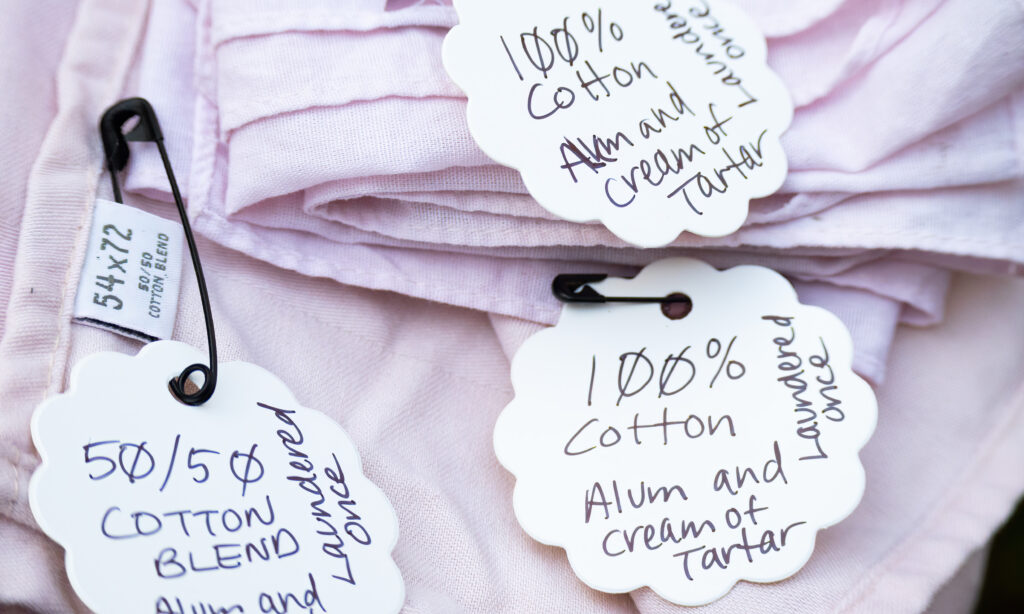
In the last edition of “The Chachalaca,” I went into detail about the substantial amounts of cochineal on the prickly pear cacti population at El Mesteño Ranch and Arboretum over the last six (6) months. I shared research about the historical use and economic importance of scale insects.
I most especially had a lot of fun photographing them under my microscope. However, my article, “Cochineal: Under the Microscope,” was just the first part of my cochineal story. This article will bring my cochineal story full circle.

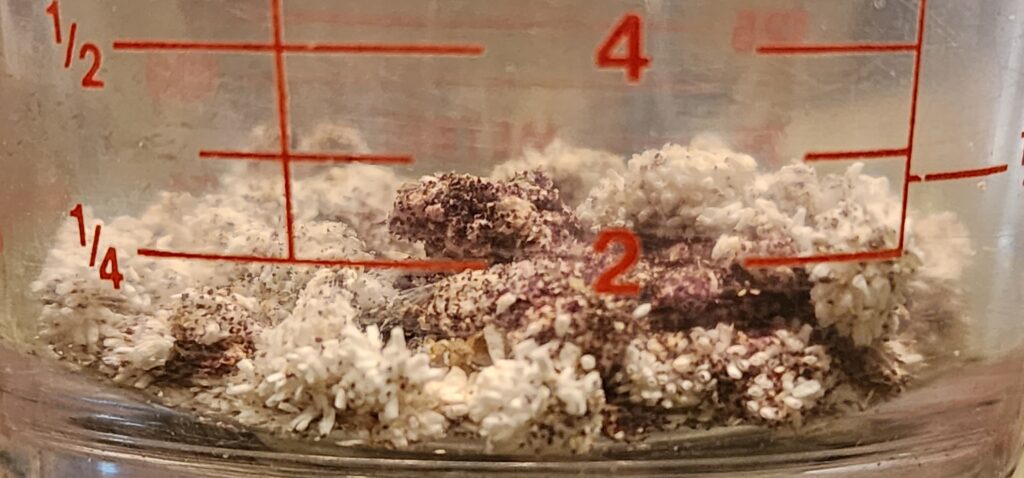
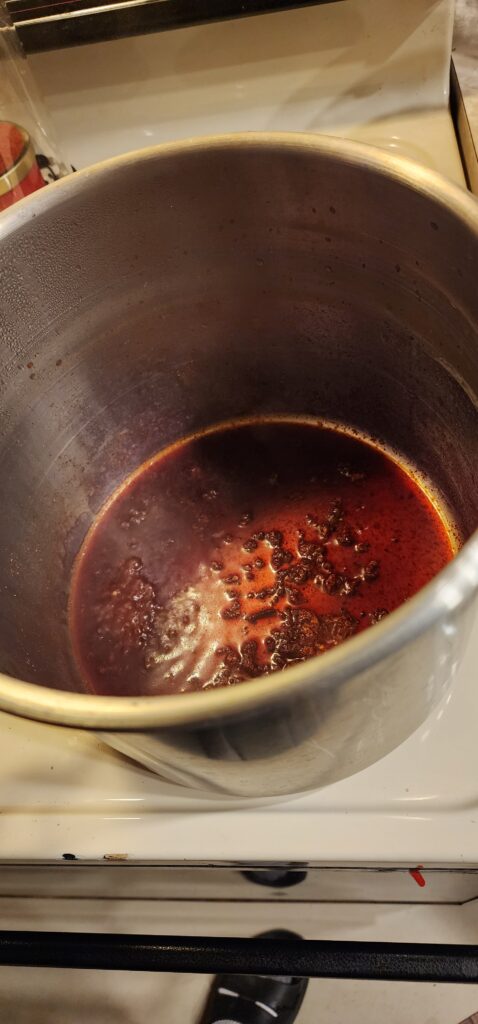

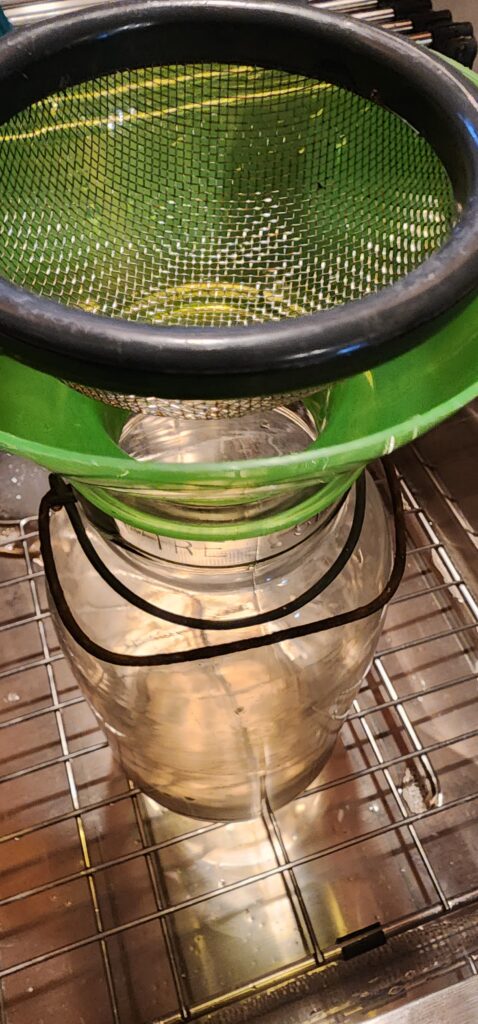

How did I extract dye from the insect?
After harvesting the cochineal, I was able to extract a dye from them by boiling the dried insects, including the “white fluff,” in filtered water in a pan on my stove top. Next, I strained the dye concoction through a small colander into a glass jar. Then, I was ready to begin my journey into dyeing assorted items with my cochineal extract.
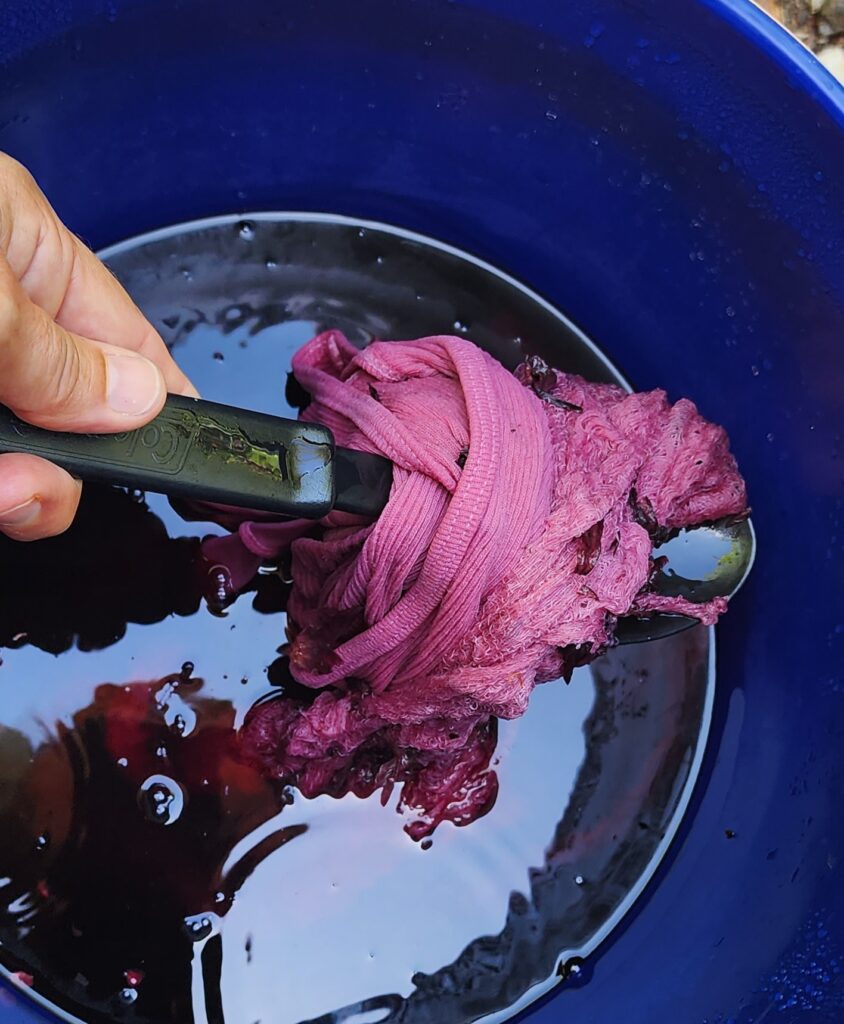

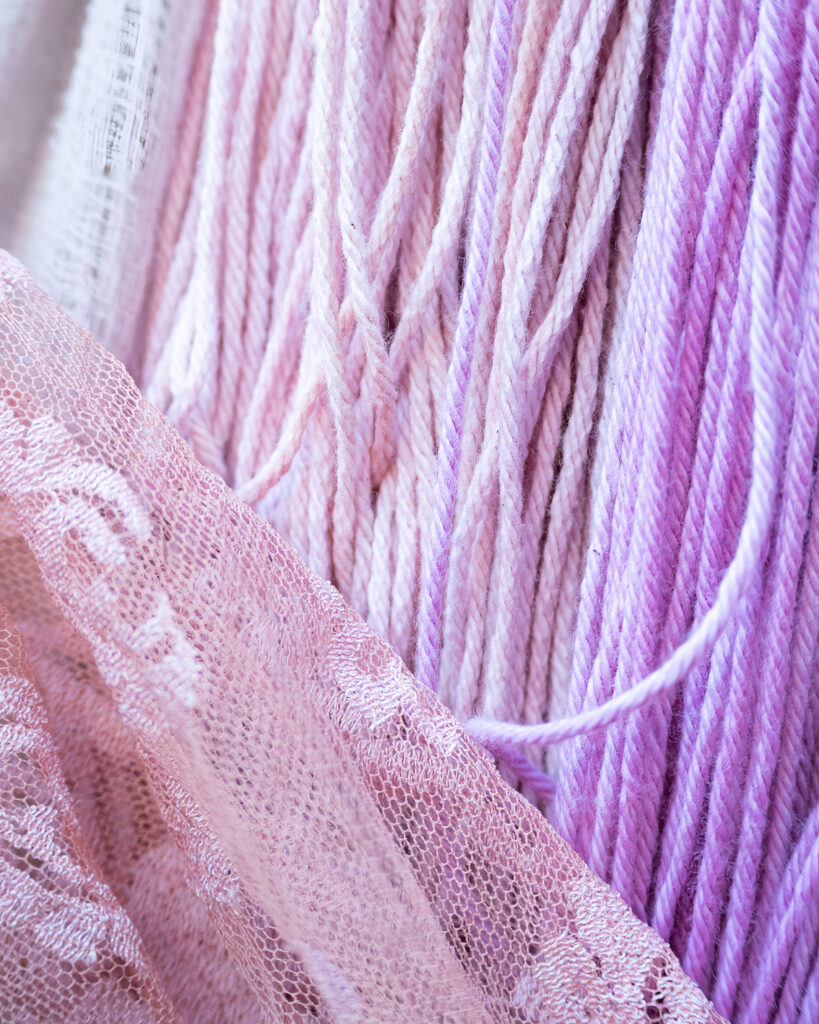


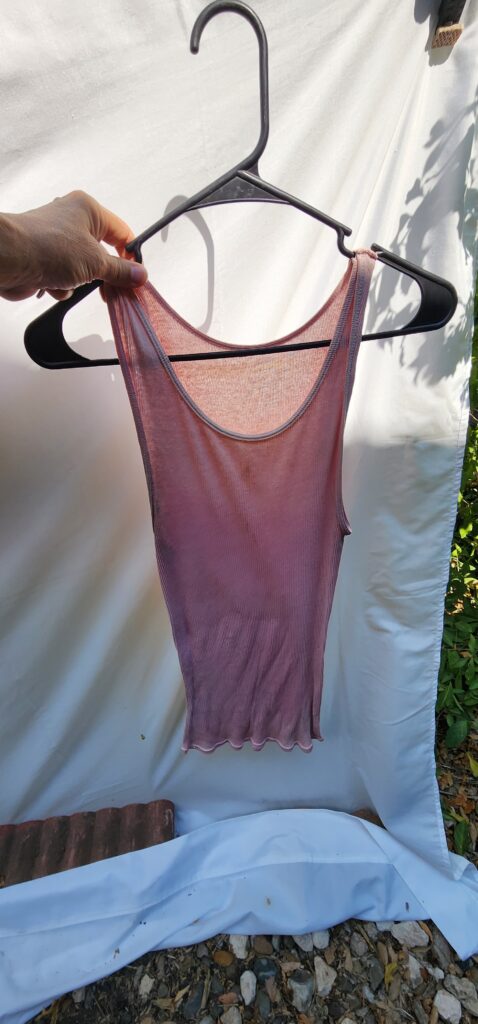

What did I do with the cochineal extract?
I “went to town,” so to speak, finding unusual ways to apply cochineal to canvas, watercolor paper, and homemade paper. I tried to leave no stone unturned. I worked with the cochineal extract application process using sponges and paint brushes, but mostly I used my hands. I quickly learned that cochineal would dye your skin and fingernails quite nicely. Hence, I began using disposable, vinyl gloves going forward. (Although the dye on my skin was not permanent, it did take a day, or so, of lots of hand washing to thoroughly remove.)


Making both homemade paper and homemade seed paper were two of my biggest cochineal dye project undertakings. Let me just say that making paper is messy, so it is no surprise that I made huge messes in my garage with this part of my cochineal experiment. Regardless of any drawbacks to my “paper caper,” I found it very satisfying to see the result of homemade seed paper in a lovely lilac hue. The cochineal-dyed seed paper, sprinkled with a hand-picked “South Texas Sand Sheet” mix of seeds that were available at the time I made the seed paper, looked so beautiful and resembled delicate, small flat bread pizzas!


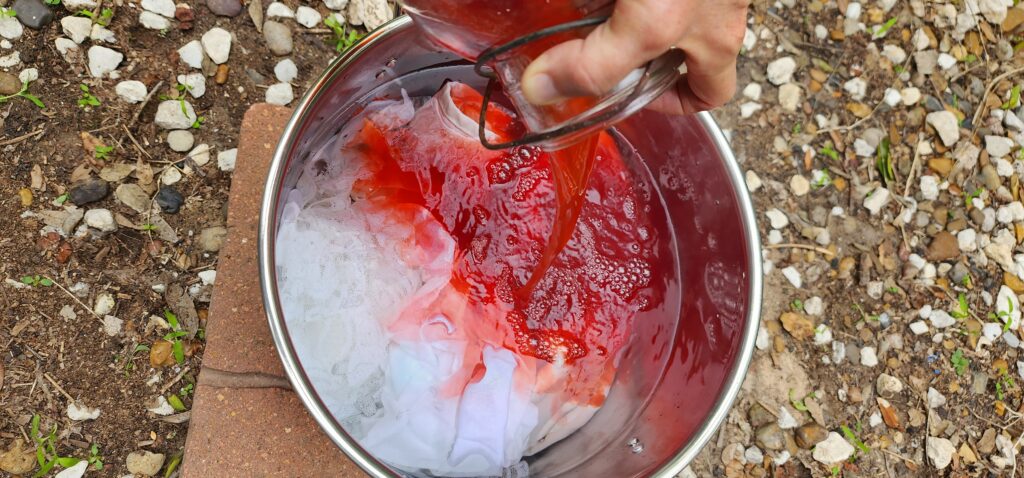

What did I use for this project?
Some of the things I used, while working with cochineal extract for craft projects and dyeing natural and synthetic fibers, are as follows:
- Textiles dyed: 100% Raw silk fabric, 100% cotton fabric, 100% cotton yarn, 50% / 50% cotton blend fabric, synthetic fibers (lace type), and gauze.
- Mordants used for dyeing textiles: Alum and Cream of Tartar
- Ready-made canvases.
- Watercolor paper.
- Inexpensive white acrylic paint.
- Paint brushes and eyedroppers.
- Melted wax, which was used to experiment with the Batik method of dyeing.
- Recycled paper scraps, an old blender, plastic tubs, buckets, sponges (to remove excess water from paper pulp), and a mould and deckle (that I made from old picture frames and plastic screen repair fabric) to make the homemade recycled paper and seed paper.
- Wildflower seeds, which were collected from the South Texas Sand Sheet, for use on the homemade seed paper.
- Natural materials, like leaves, rocks, twigs, orange slices, and coffee grounds, to create designs on watercolor paper.
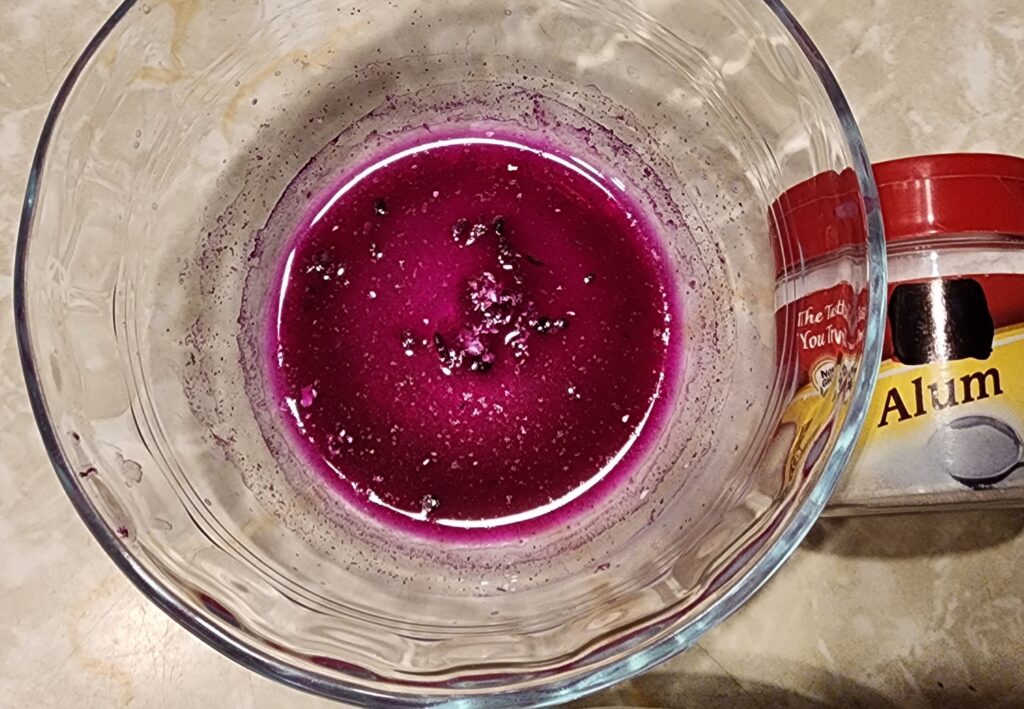







Summary of the process I used to dye textiles:
Method used for dyeing textiles: Solar
- Most of the textiles spent days sitting in the dye bath solution and being gently moved and stirred around in the dye bath to try and achieve a uniform appearance.
- After a few days in the dye bath, I removed the different textiles and allowed them to air dry for a few days to try and “fix” the dye.
- I could never quite get the dye’s level of saturation on the textiles to stay as intense as they appeared initially on the textiles coming out of the dye bath for the first time.
- I tried re-dyeing all the textiles numerous times to try to achieve darker, deeper, intense shades of purple and pink. Nevertheless, the colors achieved by subsequent dye baths never appeared to be any more intense than when they initially came out of their first dye bath.
- The textile that, in my opinion, yielded the nicest shade of red was the raw silk.
- After trial and error, including rinsing the textiles with tap water by hand and laundering some of the textiles in my washing machine on the gentlest cycle possible, I arrived at the conclusion that there are no fixed rules for dyeing with cochineal.
- The creative process and experimentation of using the cochineal scale insect in natural dye processes are equal parts science, adventure, and mystery.
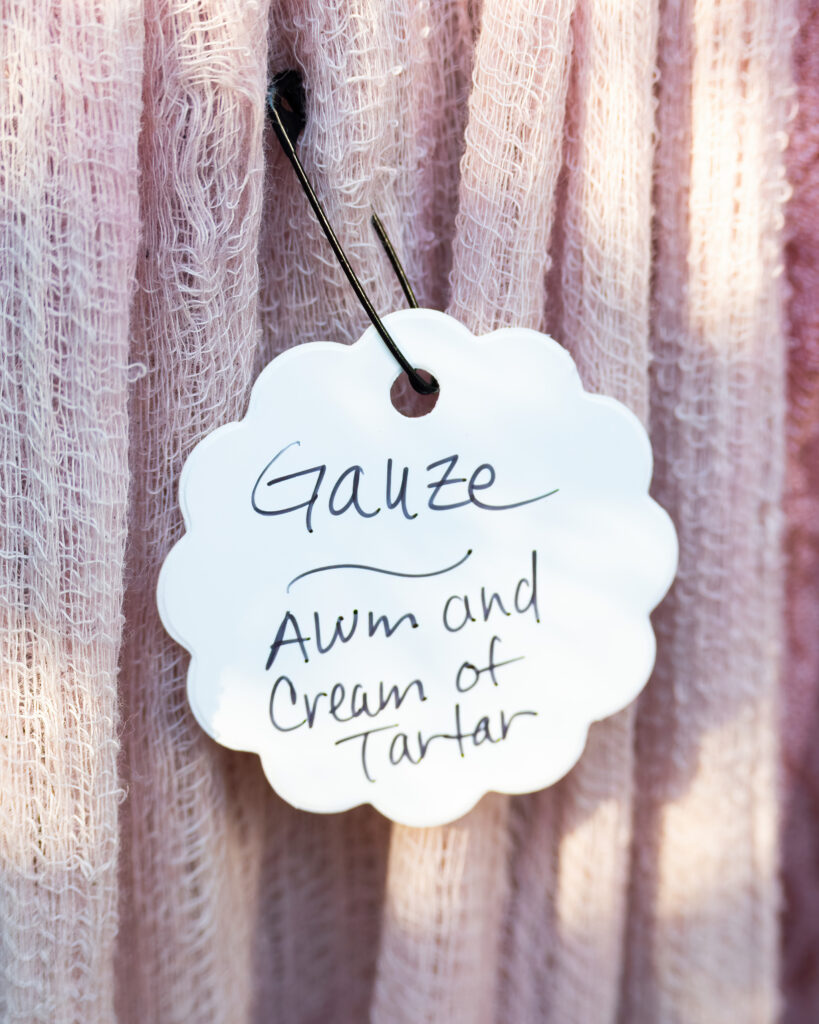








What did I learn?
Alum yielded darker, intense shades of purple.
Cream of Tartar & Alum produced pinker shades.
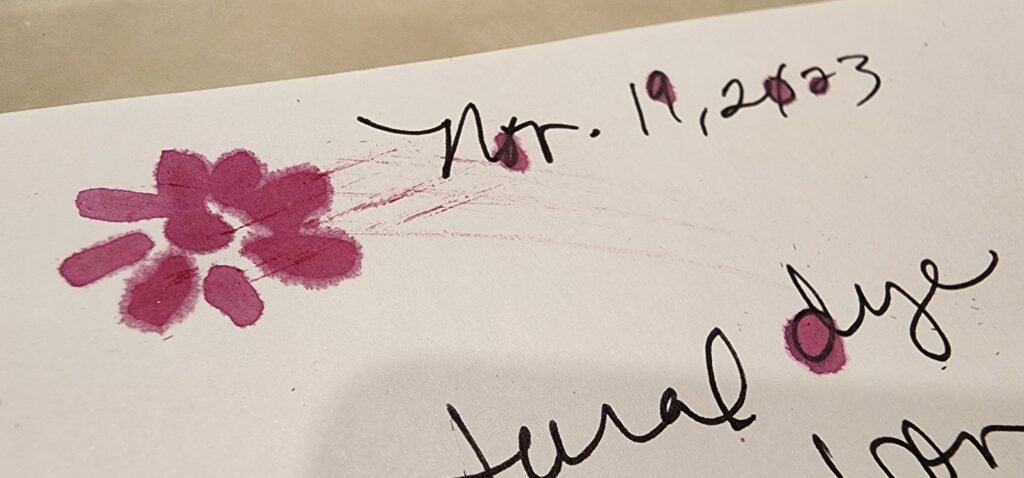

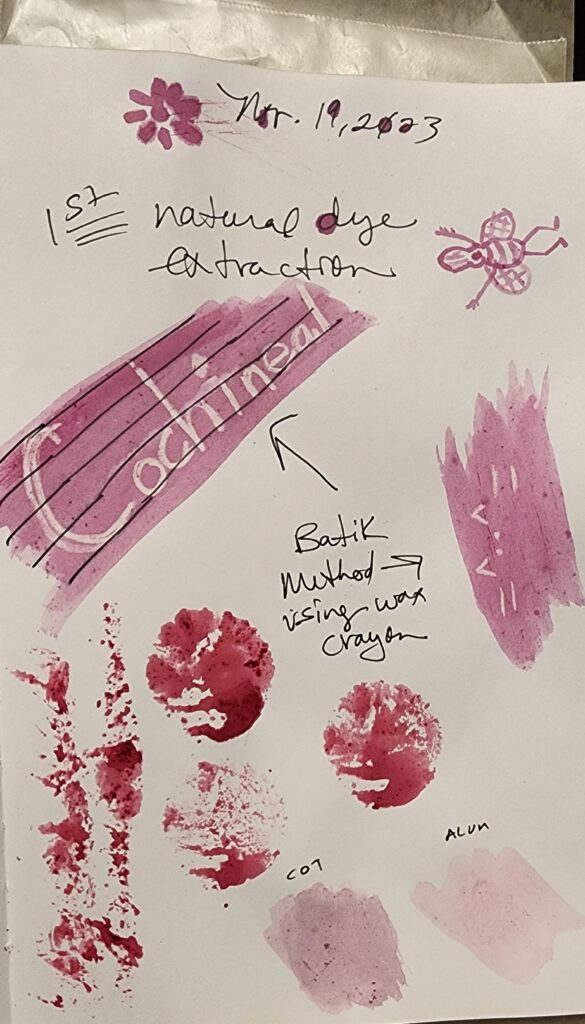

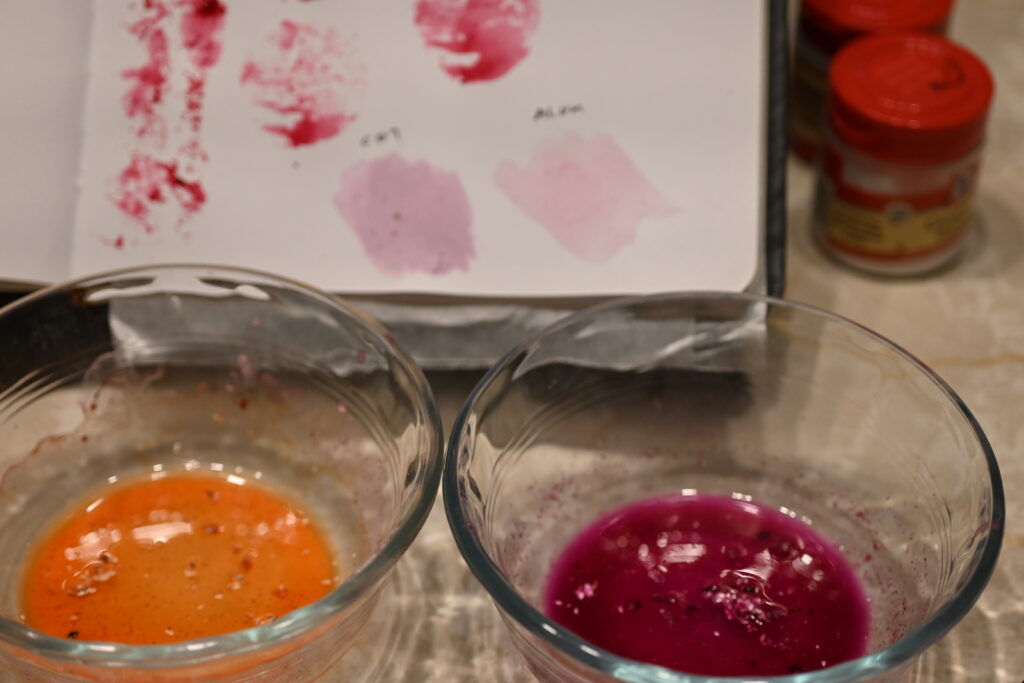




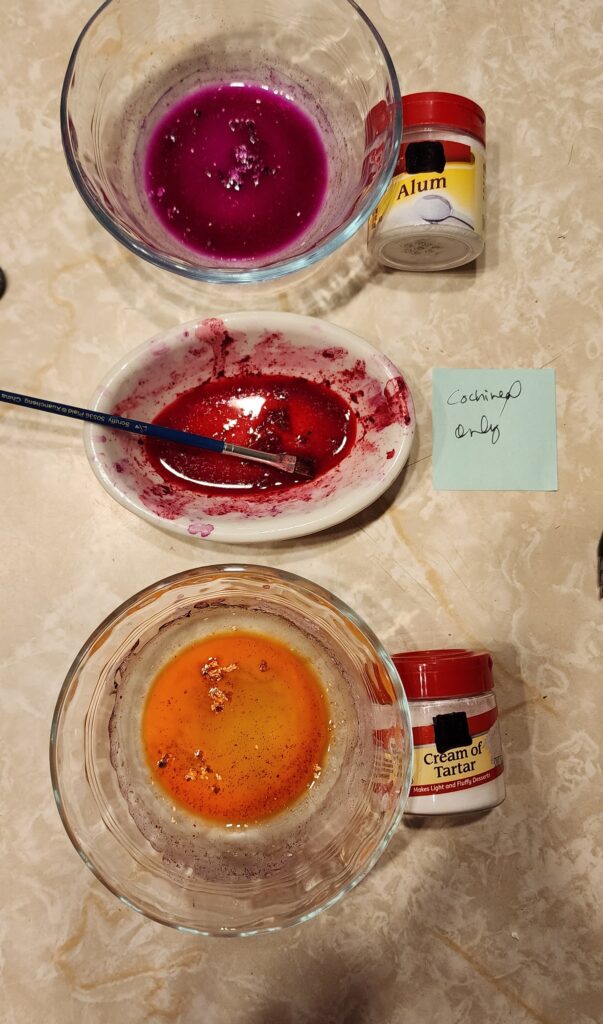




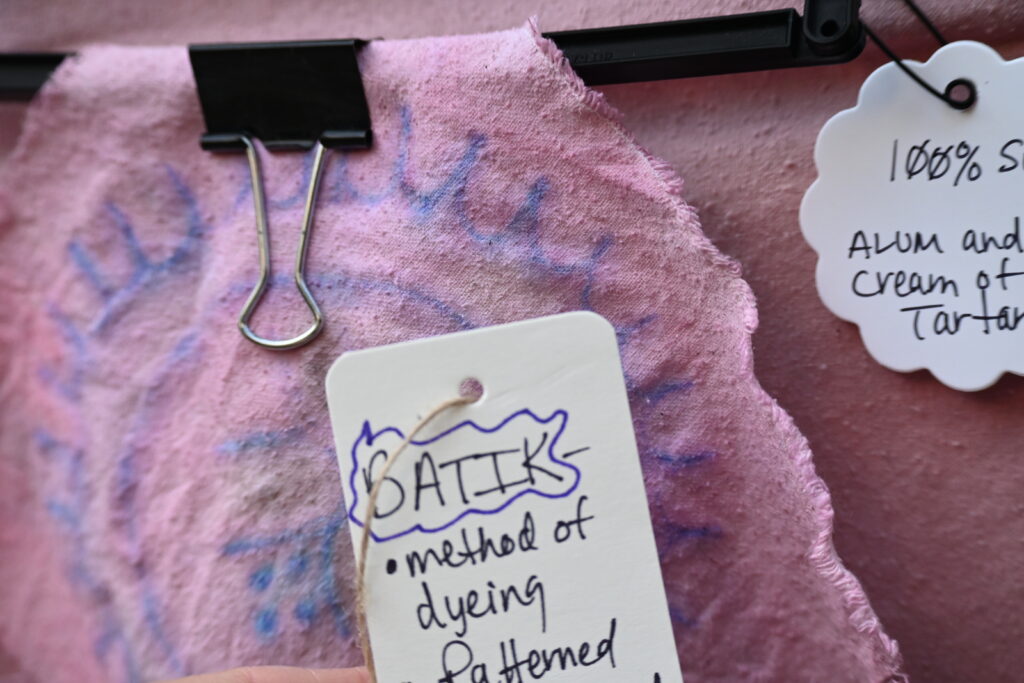




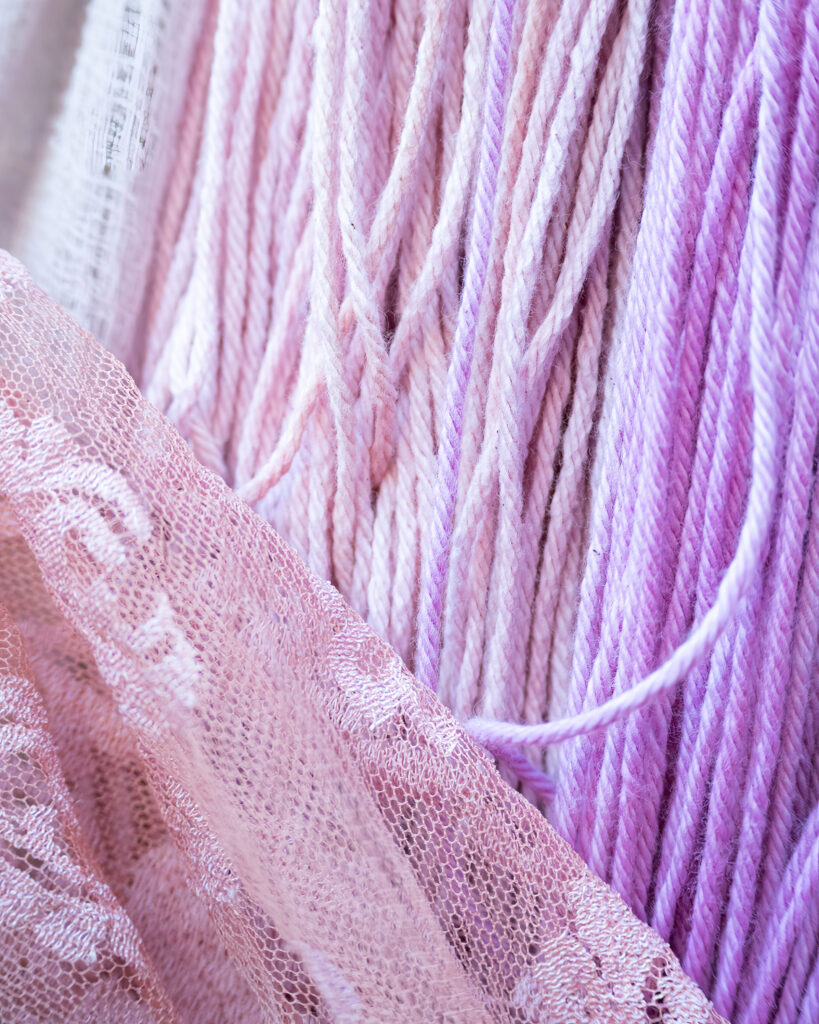




Methods of application I found interesting :
- Using an eye dropper to create designs on both ready-made canvases and watercolor paper that I purchased at a local big box store.
- Drizzling cochineal extract over nature textures on watercolor paper to see what impressions were left behind once the nature material was removed.
- Mixing the cochineal dye extract with white acrylic paint to achieve a more uniform material that adhered nicely to the ready-made canvases when applied with a simple, inexpensive paint brush.
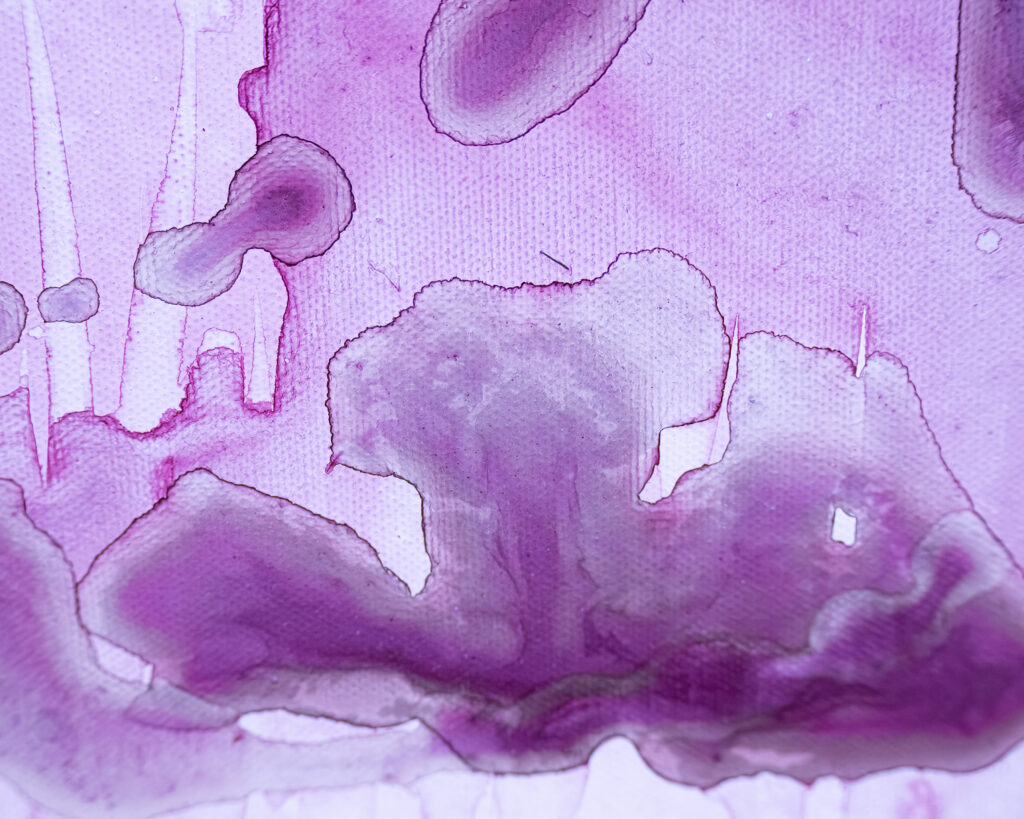



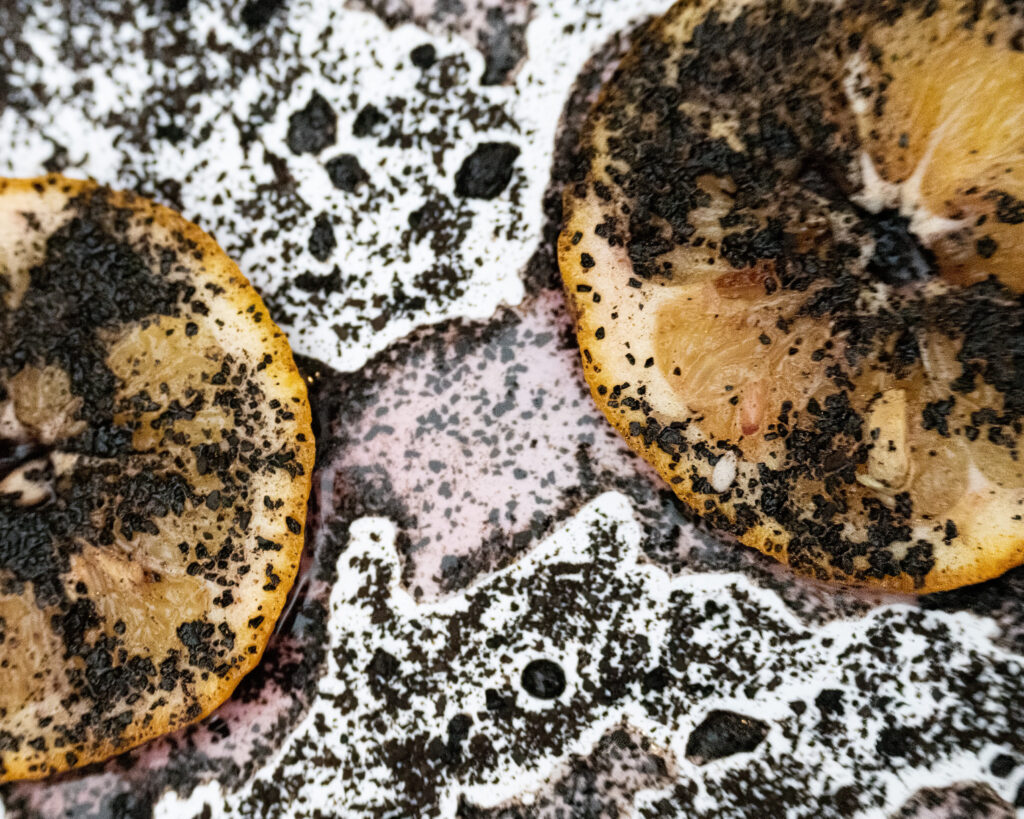



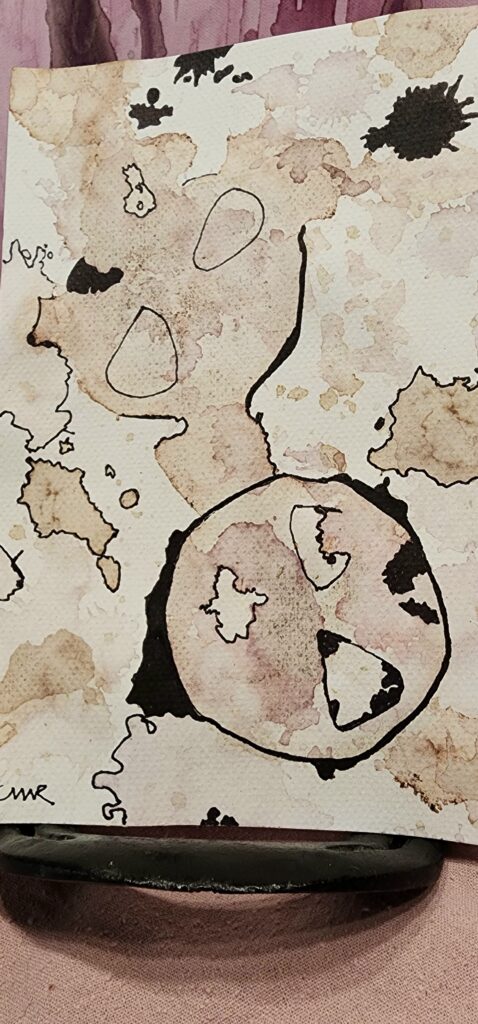

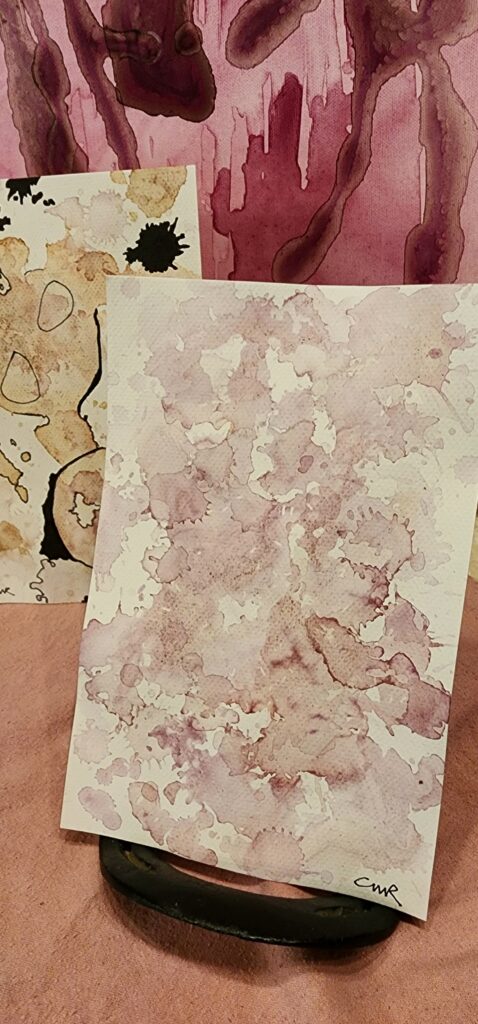

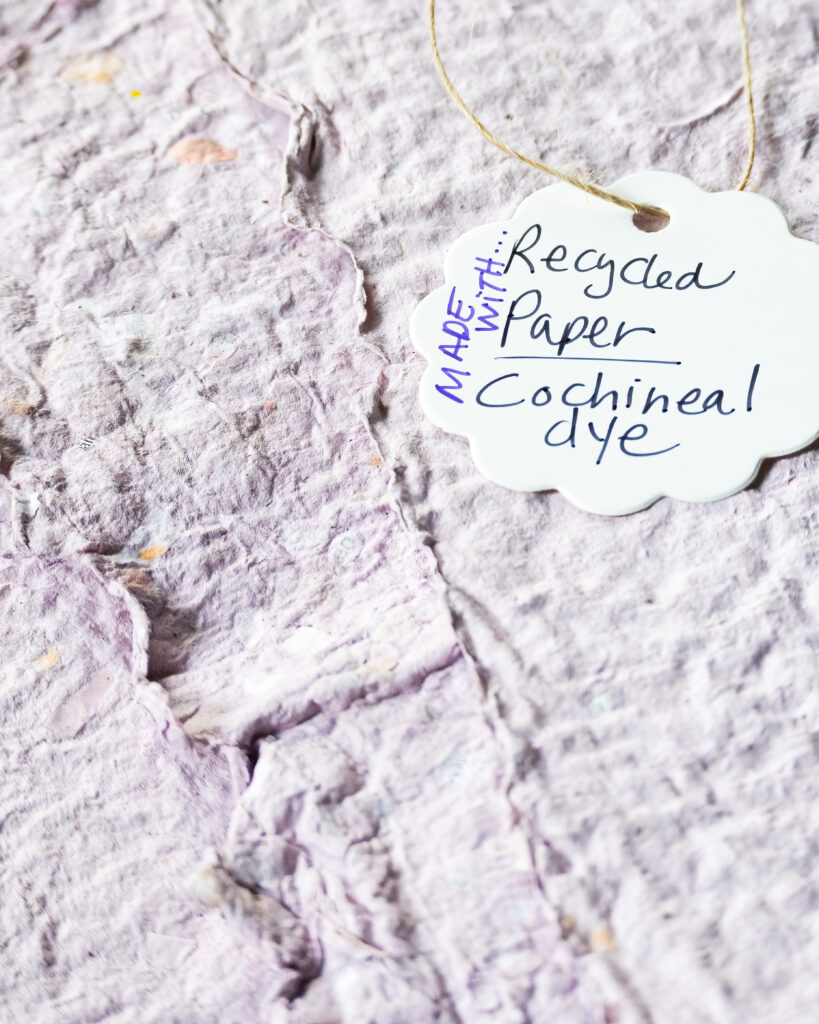

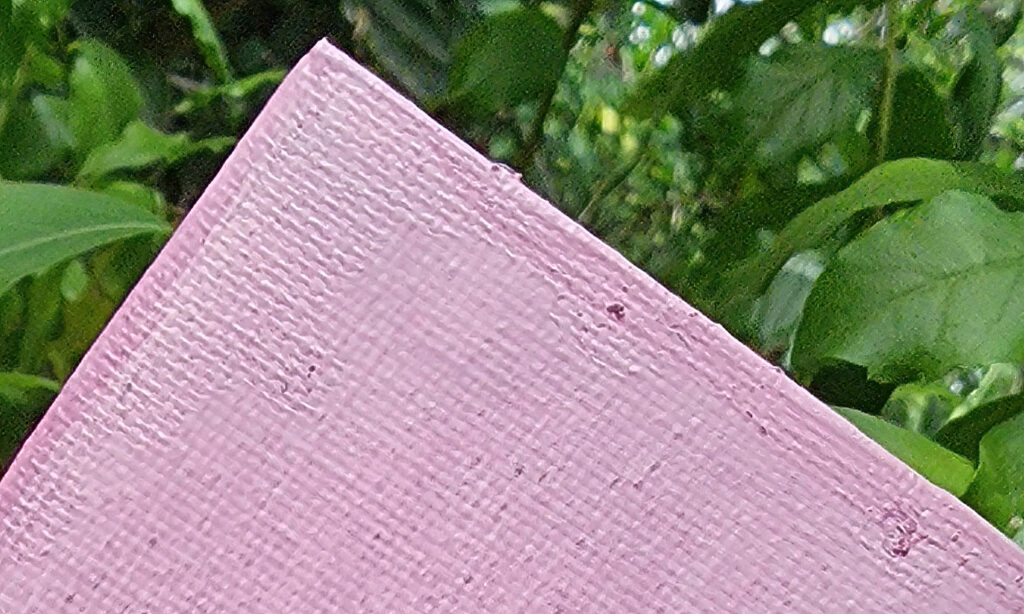



My cochineal journey—and my stories about it—have been a labor of love in my personal quest for knowledge about, and experience with, this tiny, crimson insect. What was my favorite thing produced in my cochineal experiment, you might wonder? That is an easy answer. The homemade seed paper was, by far, the most enjoyable, rewarding product produced.
If you missed the first part of my cochineal story, you may access it here:
- C. M. Rich, Texas Master Naturalist
- C. M. Rich, Texas Master Naturalist
- C. M. Rich, Texas Master Naturalist
- “Cochineal – Under the Microscope”
- Mothing Supplies for Your Review and Consideration: Examples and Links
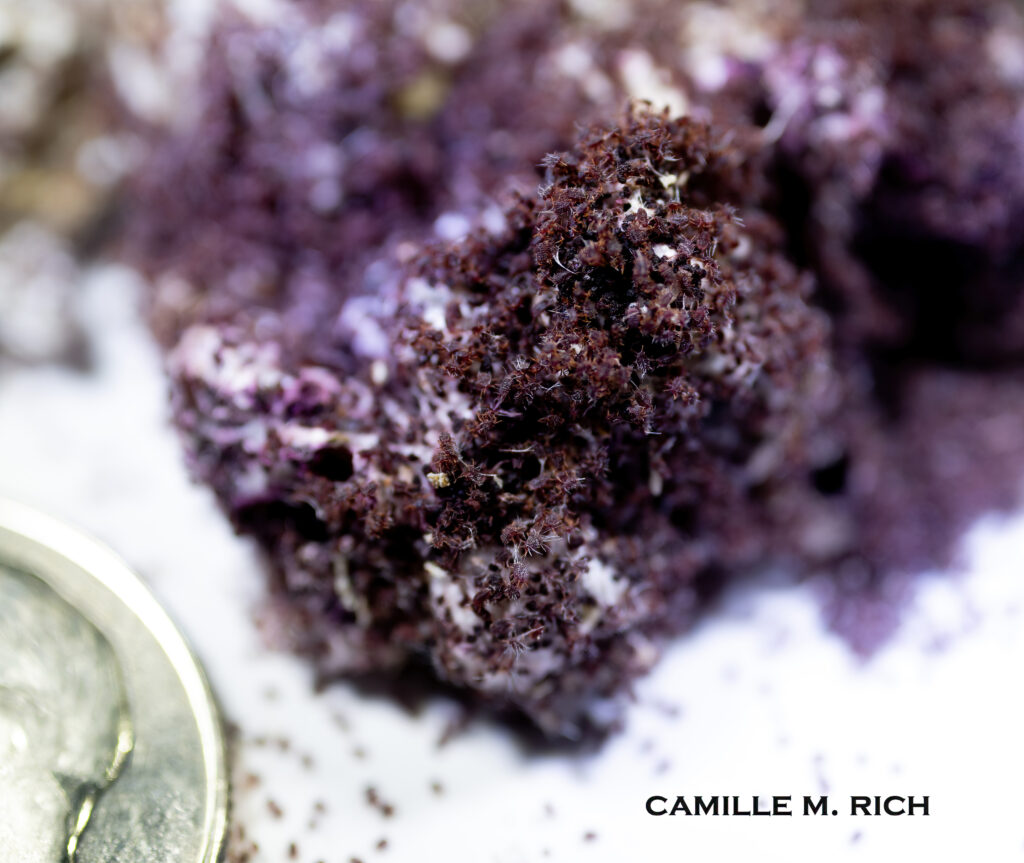






Thank you!
- March 2024
- December 2023
- September 2023
- August 2023
- June 2023
- May 2023
- November 2022
- November 2021
- August 2021
- February 2021
- September 2020
- June 2020
- May 2020
- March 2020
- February 2020
- October 2019
- September 2019
- August 2019
- June 2019
- May 2019
- April 2019
- March 2019
- February 2019
- January 2019
- December 2018


